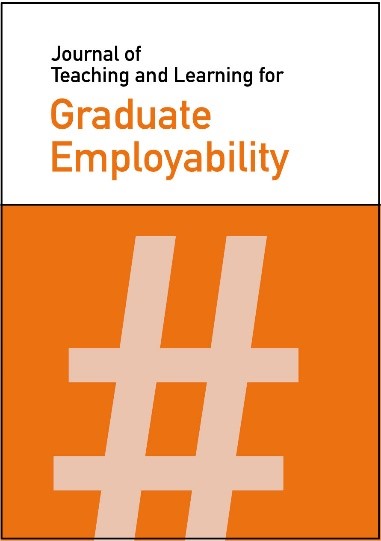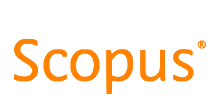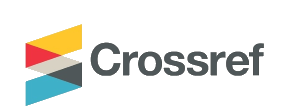‘This is what gets people hired!’: Academic perspectives on employability skills in architecture and the potential impact of COVID-19
DOI:
https://doi.org/10.21153/jtlge2022vol13no1art1555Abstract
This article presents findings from a recent study of academic perspectives towards employability in architecture. The aim of the study was to gauge the perceived impact of COVID-19 on employer values, and the degree to which these perceived changes were impacting teaching practices. Thematic analysis of data from semi-structured interviews with eight members of a postgraduate architecture community in Australia—including educators, practitioners, and students—revealed strong consensus. The relative value of skills such as teamwork and autonomy were deemed increasingly important following the widespread uptake of remote work. On the other hand, the value of competencies associated with the design process itself, as reflected in professional accreditation criteria, were perceived as stable. Most enlightening were participants’ views on how they believe employability skills are encouraged, observed and judged in academic contexts. By reinforcing how employability skill development tends to rely on the discipline’s tacit enculturation practices, this study raises critical questions about quality assurance and assessment practices within the architectural community. Embedded in these questions is the understanding that the challenge of employability skills assessment is entangled within the discipline’s failure to address its ongoing challenges around diversity, equity and inclusion.Metrics
References
Allen, S. (2012). The future that is now. In J. Ockman (Ed.), Architecture school: Three centuries of educating architects in North America (pp. 202-29). MIT Press.
Anthony, K. H. (1991). Design juries on trial: The renaissance of the design studio. Van Nostrand Reinhold.
Architects Accreditation Council of Australia (AACA) (2021). The National Standard of Competency for Architects https://aaca.org.au/wp-content/uploads/2021-NSCA.pdf
Askland, H. H., & Ostwald, M. J. (2012). Assessing creativity: Academic and student perceptions. In H. H. Askland, M. J. Ostwald, A. Williams (Eds.), Assessing creativity: Supporting learning in architecture and design (pp. 47-61). Australian Government Office for Learning and Teaching.
Askland, H. H., Ostwald, M. J., & Williams, A. (2012). Assessing creativity: Revisiting the literature. In H. H. Askland, M. J. Ostwald, A. Williams (Eds.), Assessing creativity: Supporting learning in architecture and design (pp. 1-16). Australian Government Office for Learning and Teaching.
Australian Trade and Investment Commission (2019). Innovation in employability. Austrade Education Insight Series. Commonwealth of Australia. http://www.austrade.gov.au/ArticleDocuments/1358/Innovation-in-employability.pdf.aspx
Badcock, P. B. T., Pattison, P. E., & Harris, K.-L. (2010). Developing generic skills through university study: A study of arts, science and engineering in Australia. Higher Education, 60(4), 441-58. https://doi.org/10.1007/s10734-010-9308-8
Bernstein, P. (2020, May 12). Ten thoughts on the future of practice, ArchDaily http://www.archdaily.com/939012/ten-thoughts-on-the-future-of-practice
Bohemia, E., Lauche, K., Langeveld, L., & Badke-Schaub, P. (2006, September 7-8). Designing distributed design studio [Paper presentation]. 8th International Conference on Engineering and Product Design Education, Salzburg, Austria https://www.designsociety.org/download-publication/28201/Designing+Distributed+Design+Studio
Bridgstock, R. (2009). The graduate attributes we’ve overlooked: Enhancing graduate employability through career management skills. Higher Education Research & Development, 28(1), 31-44. https://doi.org/10.1080/07294360802444347
Brown, J. (2020, May). From denial to acceptance: A turning point for design studio in architecture education. Distance Design Education https://distancedesigneducation.com/2020/05/11/from-denial-to-acceptance-a-turning-point-for-design-studio-in-architecture-education/
Brown, G., Bull, J., & Pendlebury, M. (1997). Assessing student learning in higher education. Routledge.
Burnett, I., Cameron, I., Crosthwaite, C., Foley, B., Goldfinch, T., Hadgraft, R., Hargreaves, D., King, R., Lamborn, J., Lawrence, R., Reidsema, C., Symes, M., & Wilson, J. (2021). Engineering change: The future of engineering education in Australia. Australian Council of Engineering Deans https://www.aced.edu.au/downloads/2021%20Engineering%20Change%20-%20The%20future%20of%20engineering%20education%20in%20Australia.pdf
Chayka, K. (2020). How the coronavirus will reshape architecture. The New Yorker https://www.newyorker.com/culture/dept-of-design/how-the-coronavirus-will-reshape-architecture
Cotronei-Baird, V. S. (2020). Academic hindrances in the integration of employability skills development in teaching and assessment practice. Higher Education, 79, 203-223. https://doi.org/10.1007/s10734-019-00405-4
Cuff, D. (1991). Architecture: The story of practice. MIT Press.
Curato, N. (2012). Respondents as interlocutors: Translating deliberative democratic principles to qualitative interviewing ethics. Qualitative Inquiry, 18(7), 571-82. https://doi.org/10.1177/1077800412450154
Dawson, S., & Osborne, A. (2020). Re-shaping built environment higher education: The impact of degree apprenticeships in England. International Journal of Construction Education and Research, 16(2), 102-116. https://doi.org/10.1080/15578771.2019.1668888
dela Harpe, B., & Radloff, A. (2006). Lessons learned from three projects to design learning environments that support ‘generic’ skill development. Journal of Learning Design, 1(2), 21-34. https://files.eric.ed.gov/fulltext/EJ1066478.pdf
Deming, D. J. (2017). The growing importance of social skills in the labor market. The Quarterly Journal of Economics, (4), 1593-1640. https://doi.org/10.1093/qje/qjx022
Dutton, T. A. (1987). Design and studio pedagogy. Journal of Architectural Education, 41(1), 16-25. https://doi.org/10.1080/10464883.1987.10758461
Dyki, M., Singorahardjo, M., & Cotronei-Baird, V. S. (2021). Preparing graduates with the employability skills for the unknown future: Reflection on assessment practice during COVID-19. Accounting Research Journal, 34(2), 229-45. https://doi.org/10.1108/ARJ-09-2020-0285
Ekman, N., Taft, C., Moons, P., Mäkitalo, A., & Boström, E. (2020). A state-of-the-art review of direct observation tools for assessing competency in person-centred care. International Journal of Nursing Studies, 109, 103634. https://doi.org/10.1016/j.ijnurstu.2020.103634
Gill, R. (2020). Graduate employability skills through online internships and projects during the COVID-19 pandemic: An Australian example. Journal of Teaching and Learning for Graduate Employability, 11(1), 146-58. https://doi.org/10.21153/jtlge2020vol11no1art946
Gill, T. & Bennett, S. (2021, August 29). Lessons from the lockdowns, Part 1. Parlour. https://parlour.org.au/parlour-live/light-at-the-end-of-the-tunnel/lessons-from-the-lockdowns-part-1/
Howlett Brown (2022, June 2). The Bartlett School of Architecture: Environmental investigation. https://www.ucl.ac.uk/bartlett/sites/bartlett/files/the_bartlett_school_of_architecture_environmental_investigation_report_june_2022p_6.pdf
Johnson, S., Veitch, S., & Dewiyanti, S. (2015). A framework to embed communication skills across the curriculum: A design-based research approach. Journal of University Teaching & Learning Practice, 12(4) https://doi.org/10.53761/1.12.4.6
Kumar, S., Gokhale, A., Bhattacharya, S., & Verma, V. (2018, October). University of the future: Bringing Education 4.0 to life. Federation of Indian Chambers of Commerce and Industry.
https://ficci.in/spdocument/23043/higher-education-ficci-Report.pdf
Leopold, T. A., Ratcheva, V., & Zahidi, S. (2018). The future of jobs. World Economic Forum. http://reports.weforum.org/future-of-jobs-2018/
Levett-Jones, T., Gersbach, J., Arthur, C., & Roche, J. (2011). Implementing a clinical competency assessment model that promotes critical reflection and ensures nursing graduates’ readiness for professional practice. Nurse Education in Practice, 11(1), 64-69. https://doi.org/10.1016/j.nepr.2010.07.004
Lock, E., & Kelly, K. (2020). Ignorance in risk: An exploratory investigation of Australian higher education students’ perceptions of their education-employment pathways. Journal of Teaching and Learning for Graduate Employability, 11(1), 22-36. https://doi.org/10.21153/jtlge2020vol11no1art894
Maroya, A., Matthewson, G., and Wallis, L. (2019, December). Architectural education and the profession in Australia and New Zealand. Architects Accreditation Council of Australia http://www.aaca.org.au/wp-content/uploads/Architectural-Education-and-The-Profession-in-Australia-and-New-Zealand.pdf
Oraison, H., Konjarski, L., & Howe, S. (2019). Does university prepare students for employment? Alignment between graduate attributes, accreditation requirements and industry employability criteria. Journal of Teaching and Learning for Graduate Employability, 10(1), 173-194. https://doi.org/10.21153/jtlge2019vol10no1art790
Ostwald, M. J., & Askland, H. H. (2012a). Model and matrices. In H. H. Askland, M. J. Ostwald, A. Williams (Eds.), Assessing creativity: Supporting learning in architecture and design (pp. 63-80). Australian Government Office for Learning and Teaching.
Ostwald, M. J., & Askland, H. H. (2012b). Assessment regimes: Patterns of creative evaluation in architecture and design. In H. H. Askland, M. J. Ostwald, A. Williams (Eds.), Assessing creativity: Supporting learning in architecture and design (pp. 81-100). Australian Government Office for Learning and Teaching.
Parker, S., Dempster, A., & Warburton, M. (2018, July). Reimagining tertiary education: From binary system to ecosystem. KPMG. https://assets.kpmg/content/dam/kpmg/au/pdf/2018/reimagining-tertiary-education.pdf
Ravenscroft, T. (2021). Norman Foster, Virgil Abloh and more share their thoughts on the global impact of covid-19. dezeen http://www.dezeen.com/2021/03/11/coronavirus-pandemic-impact-norman-foster-virgil-abloh-sevil-peach/
Sandberg, J., & Pinnington, A. H. (2009). Professional competence as ways of being: An existential ontological perspective. Journal of Management Studies, 46(7), 1138-1170. https://doi.org/10.1111/j.1467-6486.2009.00845.x
Sarkar, M., Overton, T., Thompson, C. D., & Rayner, G. (2020). Academics’ perspectives of the teaching and development of generic employability skills in science curricula. Higher Education Research & Development, 39(2), 346-361. https://doi.org/10.1080/07294360.2019.1664998
Shreeve, A. (2010). A phenomenographic study of the relationship between professional practice and teaching your practice to others. Studies in Higher Education, 35(6), 691-703. https://doi.org/10.1080/03075070903254602
Song, Y., & McCreary, L. L. (2020). New graduates nurses’ self-assessed competencies: An integrative review. Nurse Education in Practice, 45. https://doi.org/10.1016/j.nepr.2020.102801
Stead, N., Gusheh, M., & Rodwell, J. (2022). Well-being in architectural education: Theory-building, reflexive methodology, and the ‘hidden curriculum’. Journal of Architectural Education, 76(1), 85-97. https://doi.org/10.1080/10464883.2022.2017699
Stevens, G. (1995). Struggle in the studio: A Bourdivin look at architectural pedagogy. Journal of Architectural Education, 49(2), 105-122. https://doi.org/10.1080/10464883.1995.10734672
Stevens, G. (1998). The favored circle: The social foundations of architectural distinction. MIT Press.
Thompson, J. (2019). Narratives of Architectural Education: From Student to Architect. Routledge.
Thompson, J. & Song, H. (2021). DIAgramming Supportive Learning Environments: Architecture student wellbeing and resilience. Charrette, 7(2), 113-133. https://www.ingentaconnect.com/content/arched/char/2021/00000007/00000002/art00006
Thompson, J., Tregloan, K., Soccio, P. & Song, H. (2021a). Dual Delivery Design Studios: Exploring design learning for hybrid cohorts. Design and Technology Education: An International Journal, 26(4). https://rest.neptune-prod.its.unimelb.edu.au/server/api/core/bitstreams/03360d9f-dcf5-5827-9dda-6fdd24c13a28/content
Thompson, J., Braglia, R., & Teba, T. (2021b). Qualified Satisfaction: First-year architecture student perceptions of teamwork. International Journal of Art and Design Education, 40(1), 146-164. https://doi.org/10.1111/jade.12342
Timpson, M., & Bayerlein, L. (2021). Accreditation without impact: The case of accreditation by professional accounting bodies in Australia. Australian Accounting Review, 31(1), 22-34. https://doi.org/10.1111/auar.12303
Tomlinson, M., & Nghia, T. L. H. (2020). An overview of the current policy and conceptual landscape of graduate employability. In T. L. H. Nghia, T. Pham, M. Tomlinson, K. Medica, & C. Thompson (Eds.) Developing and utilizing employability capitals: Graduates’ strategies across labour markets, (pp. 1-15). Routledge.
Volkwein, J. F., Lattuca, L. R., Harper, B. J., & Domingo, R. J. (2006). Measuring the impact of professional accreditation on student experiences and learning outcomes. Research in Higher Education, 48, 251-82. https://doi.org/10.1007/s11162-006-9039-y
Waite, R. (2021, July 19). ‘Lost, lonely and stressed’: How covid has hit architecture students. Architects’ Journal http://www.architectsjournal.co.uk/news/lost-lonely-and-stressed-how-covid-has-hit-architecture-students
Webster, H. (2005). The architectural review: A study of ritual, acculturation and reproduction in architectural education. Arts and Humanities in Higher Education, 4(3), 265–282. https://doi.org/10.1177/1474022205056169
Windsor, C., Douglas, C., & Harvey, T. (2012). Nursing and competencies—a natural fit: The politics of skill/competency formation in nursing. Nursing Inquiry, 19(3), 213-222. https://doi.org/10.1111/j.1440-1800.2011.00549.x
Wittenoom, S. & Razbash, I. (2021, September 5). Lessons from the lockdowns, Part 2. Parlour. https://parlour.org.au/parlour-live/light-at-the-end-of-the-tunnel/lessons-from-the-lockdowns-part-2/
Yanar, A. (2007). Knowledge, skills, and indoctrination in studio pedagogy. In A. M. Salama, N. Wilkinson (Eds.), Design studio pedagogy: Horizons for the future (pp. 63-73). The Urban International Press.












